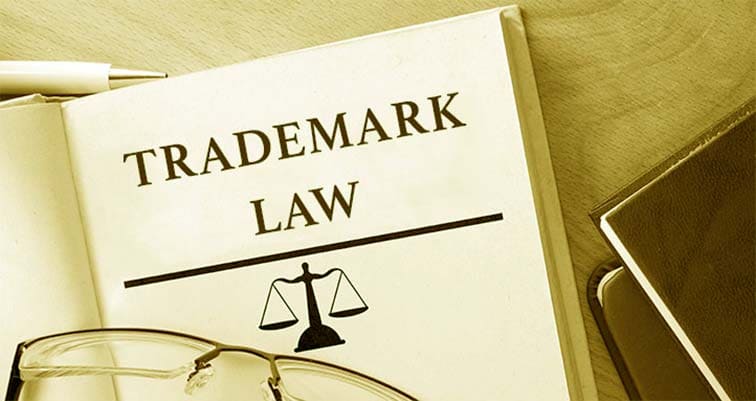What is Trademark?
What is a trademark? Trademark is simply a word, phrase or symbol used to identify the source of a product. It’s the main way to protect the goodwill of your brand and the business behind it.
A trademark serves two purposes. First, it identifies your goods or services and distinguishes them from those of competitors. Second, a recognizable mark indicates that you produce quality goods and services.
A trademark is a word, phrase, logo, symbol or design that identifies a company source and its products or services. Goodyear, the world’s leading producer of tires and owner of several well-known trademarks, has been involved in every stage of tire development from its inception as the Goodyear Tire and Rubber Company in 1898.
Conventional trademark:
A conventional trademark is a word, phrase, or symbol associated with a particular product or service. The mark indicates the brand’s quality or reputation and can help to identify it to customers.
It is one of the many types of trademarks. A conventional trademark is not a protection symbol. It does not appear on its own: it appears in the form of a word or words registered with government agencies as a source identifier for goods or services.
It is something consumers associate with one entity and does not see associated with any other company. The term “conventional trademark” refers to a trademark based on a product’s name.
This type of trademark is very common because it’s easier for consumers to remember and identify with a name than with the product’s product category or intrinsic quality. A conventional trademark can be registered with the federal government for five years and, in most cases, lasts for ten years.
A conventional trademark is a word or phrase that identifies a product’s source in consumers’ minds. This type of trademark includes words and phrases like “the” and “bra,” which are easy to remember and tell others about the company. They tend to be descriptive terms because they offer a high level of user familiarity among consumers.
It is not a registrable mark. It is approved by the Trademark and Appeal Board (TTAB). Otherwise, it would not be registered. Conventional trademarks are the most common type of trademark. They are a visual, iconic trademark that lasts for years rather than just seconds in the marketplace.
It is a group of words or symbols a consumer might consider identifying you with. A conventional trademark consists of four elements:
1) The word or symbol,
2) An explanation that identifies it as yours,
3) Word pronunciation, and
4) Its commercial value.
The conventional trademark can inform the public that a certain company or organization has created a product. Still, it would not hold much meaning in a non-traditional setting.
Non-conventional trademark:
Non-conventional trademark generally refers to a word, letter, symbol or design that consumers can easily remember. The word “unconventional” is typically used to describe a brand or product. However, when you hear this word, many people think of trademarked products normally considered conventional:
Starbucks coffee and Nike footwear are two examples of well-known conventional trademarks never technically classified as unconventional in the marketplace. They became unconventional through expansion and evolution.
Non-conventional trademarks are those that do not adhere to a set of guidelines. This kind of brand is typically a well-known product or service used to create a connection between the name and image in people’s minds, such as a well-known cartoon character, politician or celebrity.
It is a trademark that exists outside of the conventional list of generic terms commonly used to describe products. A non-conventional trademark can take any form but is essentially different from a traditional word mark or symbol mark. A non-conventional trademark is a trademark that has been used in a particular way or location.
For example, the Golden Arches logo is a conventional trademark because McDonald’s restaurants use it for their advertisement. But when it was discovered that Arches (the logo) could also be used as a singular word – not only in connection with McDonald’s but also in connection with transportation – it became a non-conventional trademark.

Non-conventional trademarks are brands that do not have a standard design. Conventional trademarks are usually brand names that are recognizable in the marketplace. The goal of a non-conventional trademark is to make premium products known in the marketplace.
It is a type of trademark that has been used for a well-established product or service. The longer the non-conventional trademark has been used, the stronger your right to it will be. A non-conventional trademark is a trademark that is not used traditionally.
They can come in many forms, including, but not limited to: using a word or phrase as part of the brand name; using foreign words and phrases in your brand name; using words in a manner that tends to confuse consumers into thinking they’re affiliated with a familiar product, and mixing words to create or conjure up new words.
It does not follow traditional standards for trademarks. It may not be considered a word or name but an identifying mark that has acquired a secondary meaning, particularly one that is unique and different from previous marks.
Laws governing trademarks across the world:
There are several fundamental laws governing trademarks across the world. The law governing trademark is mainly related to the distinctiveness and clarity of the name or mark: a trademark’s intent and commercial value must be clear.
If there is a dispute about descriptiveness or protectability, then courts will determine the uniqueness of a product based on evidence from sales, marketing and customer surveys and expert testimony. Many different laws regulate trademark protection.
These laws vary based on the country and territory where the mark is registered or used. The general subject matter of these laws includes trademarks, unregistered marks, good faith use, deceptiveness and unfair competition. The laws governing trademarks worldwide vary widely, and in many cases, laws incorporate protections for trademark owners.
The laws can be divided into two categories – federal and state. The federal acts cover areas dealing with trademark rights protection, while state laws require registration with the respective state department of commerce.

The main objectives of the trademark laws are to protect the interest of businesses by allowing them to protect their name from competitors, unfair competition, false advertising and product imitation, among others.
Different countries have different laws to regulate trademarks. For example, in England and Wales (and for all EU member states), registered trademark owners enjoy a monopoly on it. However, this does not apply in the United States.
The Federal Trademark Dilution Act Of 1995: This Act was passed by Congress after a Supreme Court case in 1994. The act was created to protect well-known trademarks from being diluted or tarnished by other products that are very similar to them. The dilution confuses consumers and could discourage them from purchasing the original trademarked product.

